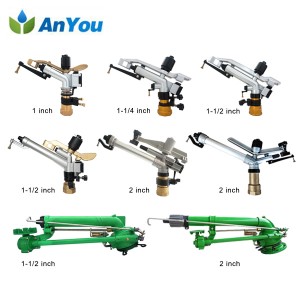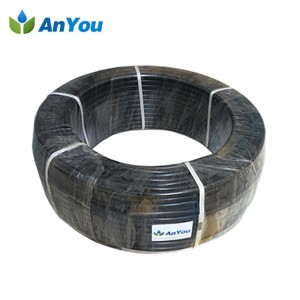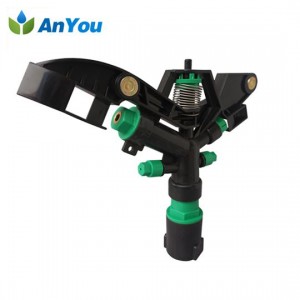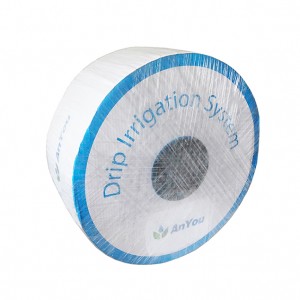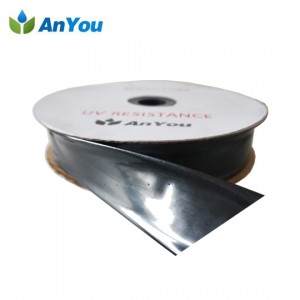In the 70 years since the founding of New China, China has continued to carry out large-scale farmland water conservancy construction. The irrigated area ranks first in the world, and the total amount of agricultural water use has basically increased. It has formed a relatively complete farmland irrigation and drainage project system and irrigation and drainage facilities management system and mechanism. National food security has made a major contribution.

The report of the 19th National Congress of the Communist Party of China clearly stated: “To ensure national food security, the Chinese people’s rice bowls are firmly in their hands.” How did the rice bowls end up? —— After 70 years of water conservancy construction, the effective irrigation area of farmland in the country increased from 240 million mu in 1949 to 1.02 billion mu in 2018, and the irrigation area ranked first in the world; the total grain output of the country increased from 226 billion kg to 13,000. About 100 million pounds; about 5% of the country’s arable land area of irrigated area produced 75% of the country’s total grain and 90% of cash crops. The rice bowl in the hands of the Chinese people is even stronger.

Since the founding of New China, the construction of farmland water conservancy has opened a new chapter, and a large number of irrigation districts such as Anhui Shihang, Shandong Weishan, Henan Hongqi Canal, Gansu Jingdian Water, etc. have been built, and the implementation of large and medium-sized irrigation districts continued to be built and saved. With the transformation, the central government has continuously increased its support. After large-scale construction and transformation, the current large and medium-sized irrigation districts have grown to more than 7,800, and small pumping stations, machine wells, and ponds have grown to more than 20 million, basically forming a farmland irrigation and drainage system with relatively perfect storage, introduction, extraction and drainage. Consolidating the water base of food security. By 2018, China’s irrigated area exceeded 1.1 billion mu, ranking first in the world. The effective irrigation area of farmland was 1.02 billion mu, and the irrigation water utilization coefficient was increased to 0.554, which provided strong support for promoting agricultural production, resisting natural disasters and ensuring food security.
At the same time, the state regards water-saving irrigation as a strategic, fundamental and revolutionary measure, and vigorously develops high-efficiency water-saving irrigation to achieve farmers’ income and water conservation. The Ministry of Water Resources and other relevant departments have explored regional development models such as drip irrigation and sprinkler irrigation under the northwestern membrane, drip irrigation under the northwest membrane, water supply and sprinkler irrigation in North China, and frequency conversion pumping station + pipeline water irrigation. By the end of 2018, the country’s efficient water-saving irrigation area reached 334 million mu. Compared with the traditional irrigation mode, high-efficiency water-saving irrigation can reduce the employment of 2 working days and reduce the channel occupation by more than 5%, which effectively promotes the development of modern agriculture. In the past 40 years, with the expansion of irrigation area, the increase of irrigation guarantee rate and the steady increase of total grain output, the total amount of agricultural water has basically increased by zero. High-efficiency water-saving irrigation has made outstanding contributions to safeguarding national food security and alleviating the contradiction between water supply and demand.
In order to promote the sustainable development of agricultural irrigation, the state continues to deepen reform and innovation. Adhere to the “first construction mechanism, post-construction project”, comprehensively promote the comprehensive reform of agricultural water price, gradually improve the agricultural water use efficiency and the benign operation guarantee level of farmland water conservancy projects, and promote the realization of agricultural modernization. At the end of 2018, the cumulative implementation of the comprehensive reform of agricultural water prices nationwide exceeded 160 million mu. The property rights of farmland water conservancy facilities have gradually become clear, and the multi-channel financing mechanism for farmland water conservancy has gradually formed. About half of the country’s farmland water conservancy facilities have clarified property rights in the form of “two certificates and one book”, and cultivated and developed a large number of farmers’ water cooperation organizations to manage the irrigation area of nearly 300 million mu. Actively promote standardized and standardized management of irrigation districts and pumping stations, and 428 large-scale irrigation districts are characterized as public welfare or quasi-public welfare institutions. The “two fees” have been implemented to varying degrees, and the management capacity and service level of irrigation and drainage projects have been greatly improved.
Post time: 10-10-2019


